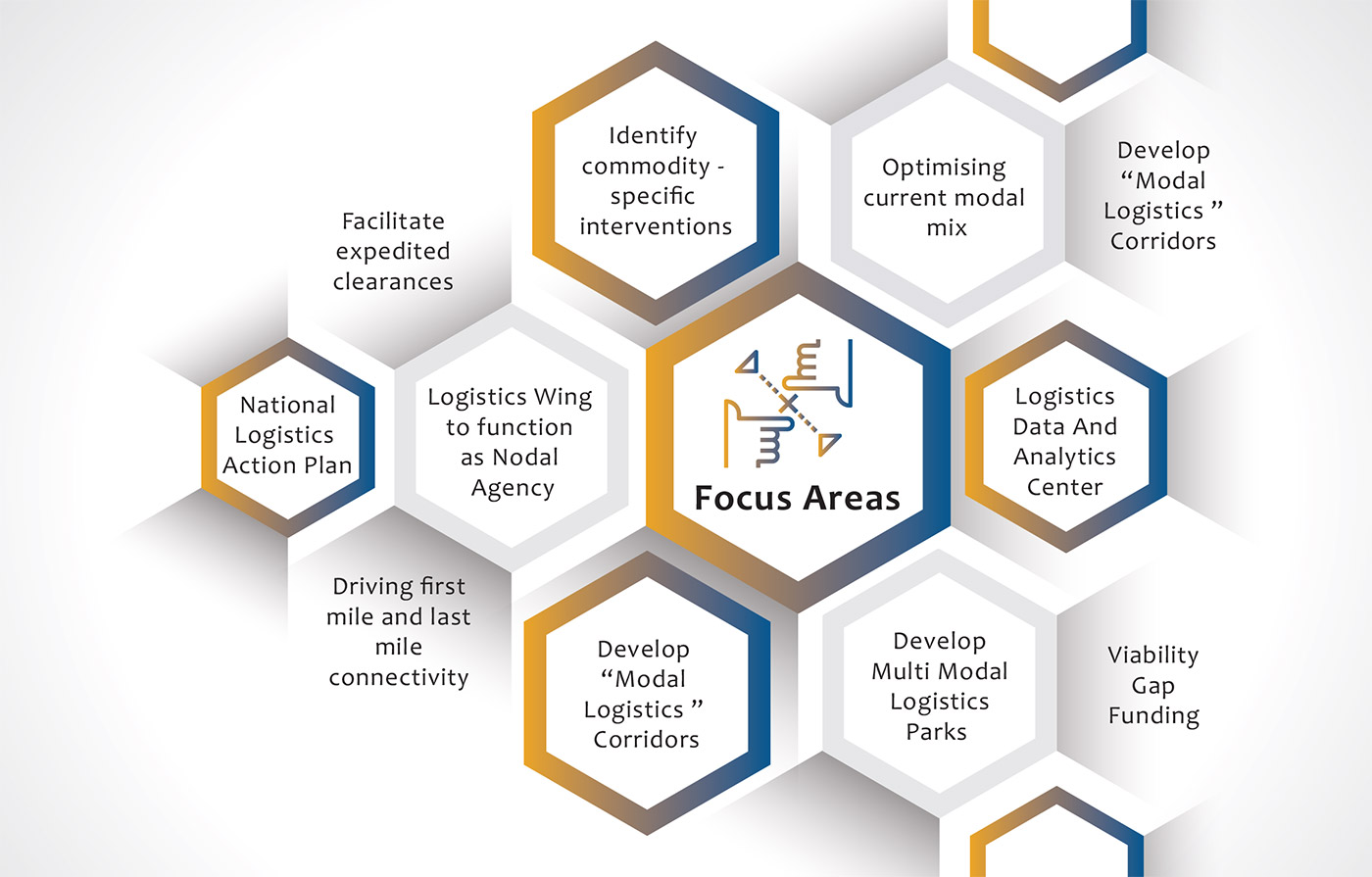The Draft National Logistics Policy was published by the Ministry of Commerce - Logistics division on 5th Feb 2019, seeking suggestions and comments from various stakeholders which can be examined and reviewed prior finalization of the policy.
The relatively high cost of logistics in India and its effects on the facilitation of domestic and foreign trade has been discussed and debated for a long time now. The present policy has been brought out, accordingly, to address holistically the various challenges beleaguering smooth cargo movement and causing additional costs for Importers and Exporters.
- Key Objectives Of The Draft Policy
- Create a single point of reference for all logistics and trade facilitation matters
- Driving logistics cost as a percentile of GDP from current levels (13-14 per cent) to an estimated 10 per cent to align cost with best in class international standards
- Creation of national logistics e-marketplace as a one-stop market place
- Creation of a data and analytics centre to drive transparency and continuous monitoring of key performance metrics
- Enhance efficiency of logistics value chain through increased digitization and technology adoption
- Encourage Industry, Academia, and Governments to create a Logistics Centre of Excellence to drive innovation in the logistics sector
- Creating and managing on an ongoing basis, an Integrated National Logistics Action Plan that is composed of the logistics plans of various stakeholders (like the various modes of transport, customs, ports, respective State Governments) and State Logistics Plans for aligning the National logistics action plan with the priorities of the country and the states concurrently
- Doubling employment and skill development in the logistics sector
- Improve India’s ranking in Logistics Performance Index to between 25 and 30 (from 44 in 2018)
- Strengthening the warehousing sector by improving the quality of storage infrastructure
- Reduce losses due to agriwastage to less than 5 per cent by improving cold chain logistics solutions, improvement of packaging conditions and other post-harvest management techniques
- Promote cross-regional trade on e-commerce platforms to enable a seamless flow of goods
- Encourage adoption of green logistics in the country
- The challenges in the logistics industry have been of different nature as evident from the long list of the objectives proposed. However, the major challenges in Indian logistics may be summarized as follows :
- A large number of stakeholders involved in the process of moving goods from point of discharge at Indian soil to the consignee and similarly from premises of the shippers to points of departure from India. Different sets of documentation governed by different deliverable benchmarks and tariffs always cause a prolonged process of ‘permission’ or ‘clearance’ at port/ terminals before the cargo can actually be moved.
- Not withstanding the ~5.5 million km of road network in India (second highest in the world) less than ~1,32,000 km is of a reasonably good standard (National Highways) and it carries 40 to 50 per cent of the total road bound traffic in India. Only ~23,000/ 25,000 Km of National Highways has four lanes incidentally. Naturally, the average speed of trucks on Indian roads is therefore very poor at about 20 km per hour. Construction of new roads of international standards would pose challenges to land use considering India’s population and agriculture land.
- Railways are probably one of the strongest Government Departments in India in the context of their network and efficiencies. However, till about 10 years ago railways have been unilaterally developing their track network, largely ignoring the potential benefits available in synchronization of their projects with development projects undertaken by Government of India and State Governments in waterways and road sectors to derive optimum benefits.
- Another key challenge that the policy proposes to address is the optimization of the modal mix. Of late, there has been a lot of thrust in the waterways sector but these initiatives are expensive and will require reforms soon to encourage continuity; Laying railway tracks is an another expensive proposition although a significant part of railway network development is certainly due to materialize through the two Dedicated Freight Corridor (DFC) projects under implementation presently.
- Never-the-less, the proposals of converting present railway modal share of 31 to 50-55 per cent in future and convert 9 per cent of the present waterways share to 20-25 per cent for waterways are going to be both difficult and challenging objectives in terms of funding and viability. A possible solution is probably to limit the number of modal options in various areas of India.
- The PCS 1x platform is already providing a common platform to over 25 stakeholders including customs, ports and other stakeholders both in the public and private sector.
- Improving commercial relationships and developing commercial agreements with various organization/ countries/ regional corporations will help in developing trade connectivity. Accession to the International conventions, strengthening regional cooperation and coordination among various countries and stakeholders and financing cross-border transport projects will help in enhancing the regional maritime connectivity.
Focus Area Identified In The Policy
An integrated and efficient logistics policy developed towards creating efficient and user-friendly ecosystem can boost the economic growth in the country and have the potential to facilitate trade, enhance global competitiveness, improves incomes. The present logistics policy document is a comprehensive document which addresses the majority of challenges faced by the logistics industry today. Effective, successful and wellcoordinated implementation of the policy will determine the real impact on the ground.
